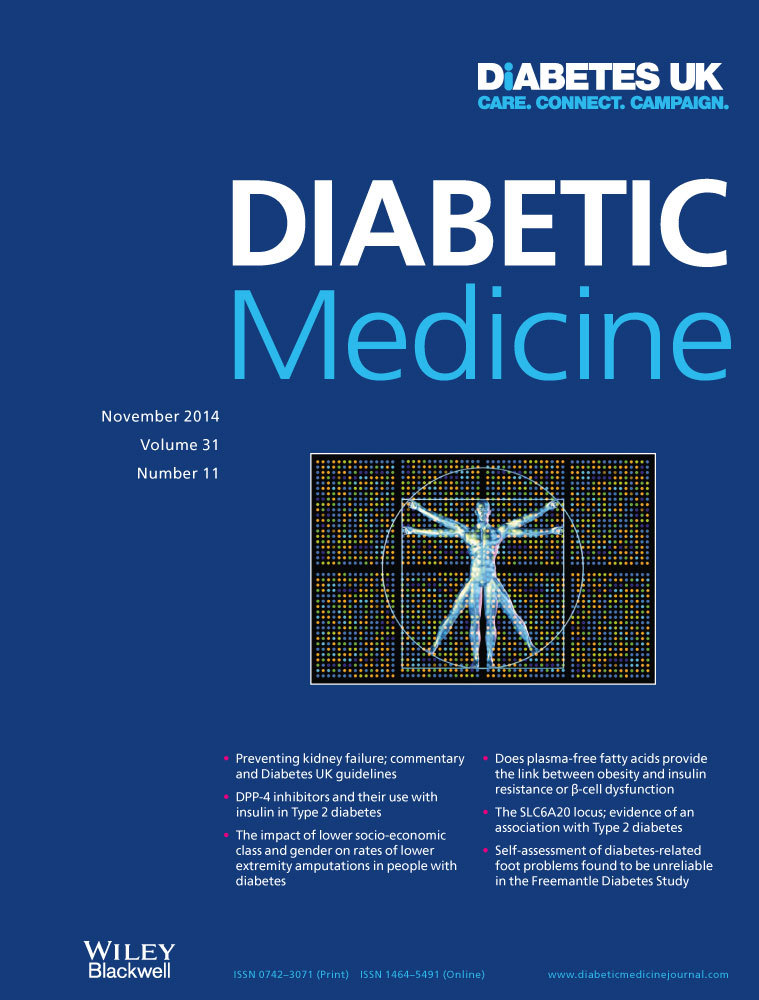At least one in three people with Type 2 diabetes mellitus referred to a diabetes centre has symptomatic obstructive sleep apnoea
Abstract
Aims
To investigate the prevalence of symptomatic obstructive sleep apnoea in unselected patients with Type 2 diabetes referred to a tertiary diabetes clinic.
Methods
In a cross-sectional design, all newly referred patients were offered a stepwise screening for obstructive sleep apnoea with: (1) The Berlin questionnaire; then, if indicative: (2) overnight home monitoring with the ApneaLink™ device. Patients with an apnoea–hypopnoea index ≥ 5/h were offered referral for diagnostic polygraphy and treatment initiation.
Results
A total of 200 patients participated (61% men; age 59.6 ± 10.5 years, diabetes duration 8.3 ± 6.3 years and BMI 31.7 ± 6.7 kg/m2). According to the questionnaire, 106 patients showed ‘high risk’ of obstructive sleep apnoea, and 72 of these were referred to polygraphy based on ApneaLink screening corresponding to a prevalence of symptomatic obstructive sleep apnoea of 39%. Patients with symptomatic obstructive sleep apnoea had significantly higher BMI, poorer glycaemic control and lower plasma HDL cholesterol levels as compared with patients unlikely to have obstructive sleep apnoea. The groups were not different with respect to sex, age, diabetes duration, blood pressure, diabetic complications or medication use. In multiple regression analyses, age, BMI and HDL cholesterol levels were all significant, independent predictors of obstructive sleep apnoea.
Conclusions
At least one third of people with Type 2 diabetes referred to a diabetes clinic in Denmark has symptomatic obstructive sleep apnoea. Our data suggest higher age, a compromised plasma lipid profile and a more obese phenotype in patients with Type 2 diabetes who have obstructive sleep apnoea, highlighting the need to focus on screening and treatment of obstructive sleep apnoea in these patients.




